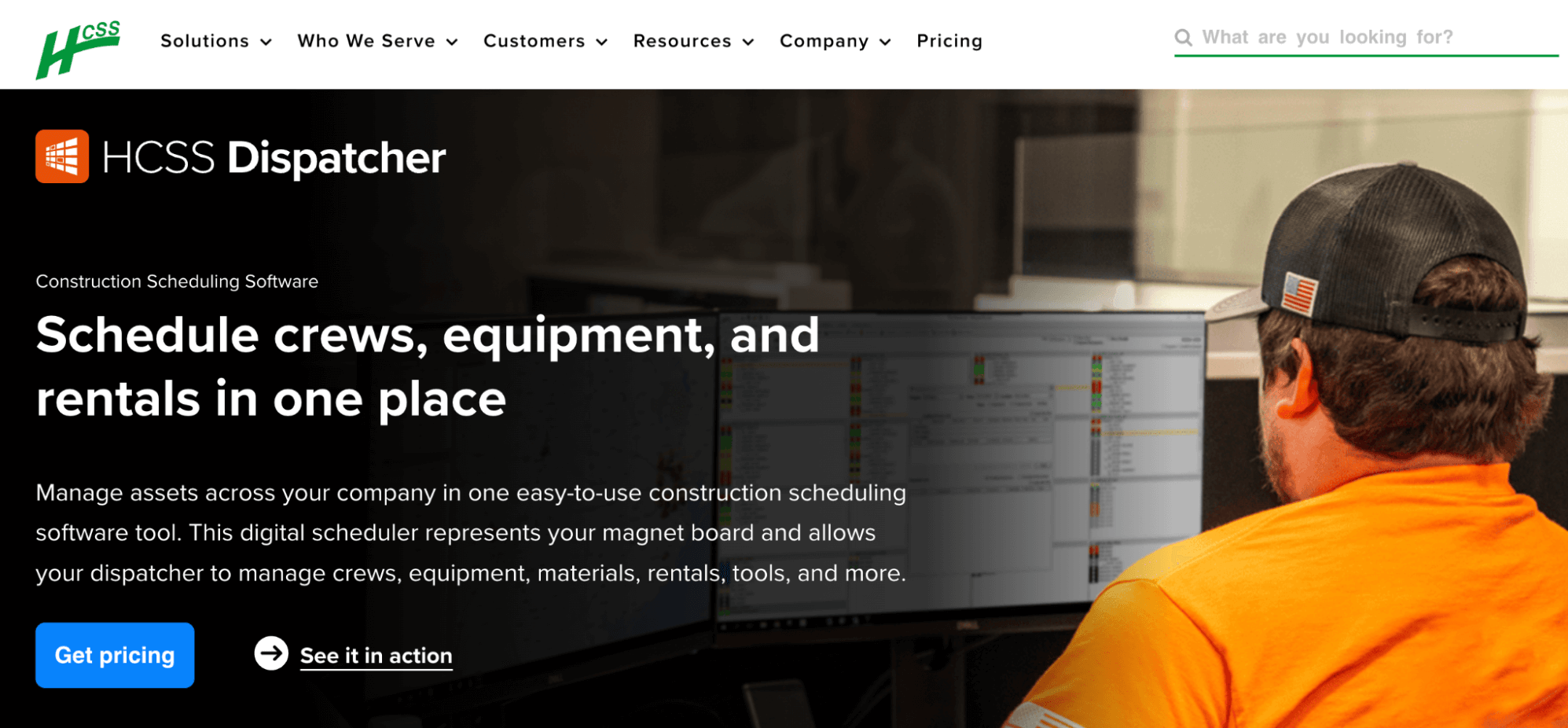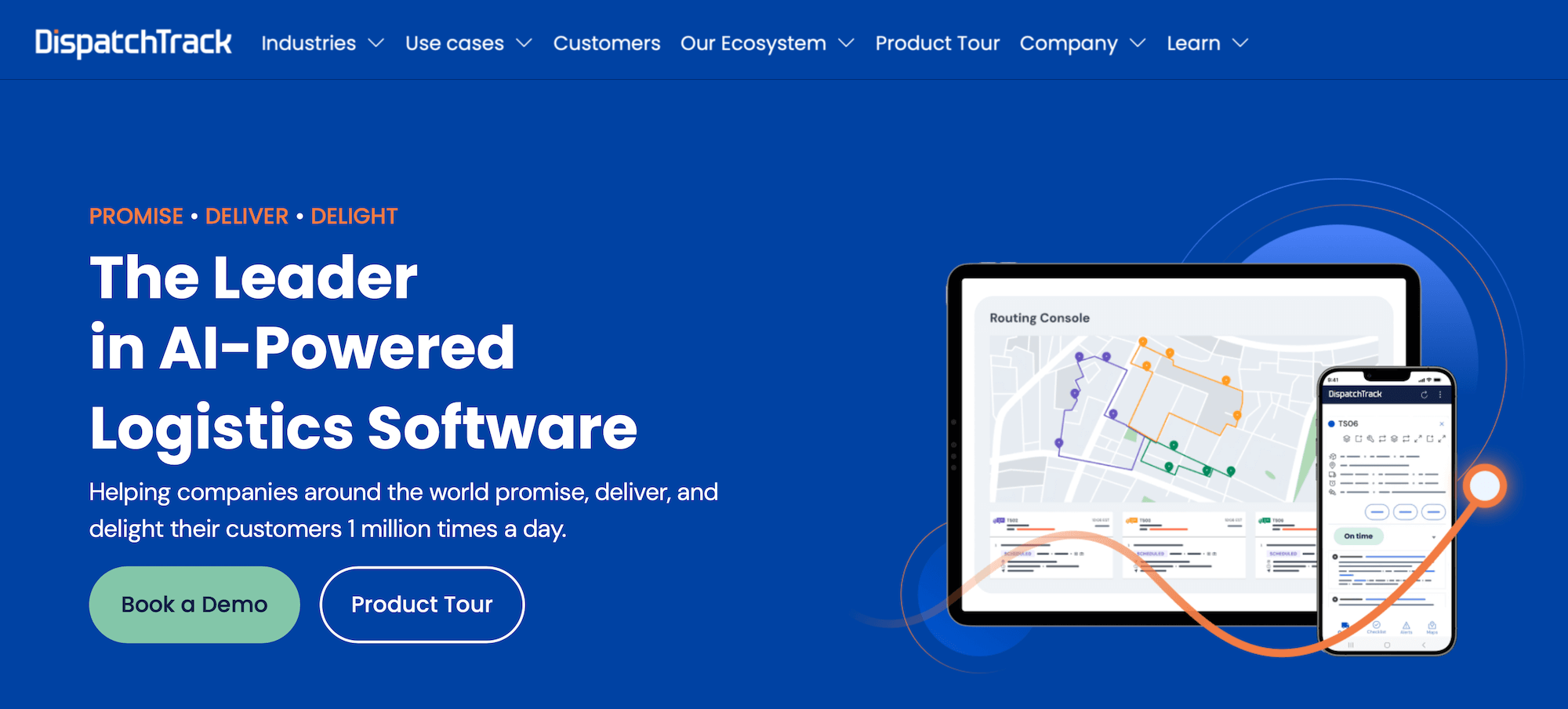Construction dispatch software makes it easier for you to plan and track the various loads, vehicles, and teams involved in your construction project or building site.
However, spend even a moment researching these tools and you’ll see just how many different options there are. For instance, some specialize in scheduling employees, contractors, and technicians, while others are built primarily to manage equipment rental and delivery.
As with all dispatch management software, it’s important that you find the right fit for your specific needs. So in this guide, we share the five best dispatch software tools for the construction industry and break down who they’re best for.
We start with Toro TMS, our trucking management software (TMS) built specifically for aggregates bulk haulers and construction companies that haul their own materials. We’ll also share some alternative options for different types of businesses.
Looking for a better way to dispatch aggregates and other bulk construction materials? Book a demo with Toro TMS to get started.
1. Toro TMS: Top-rated construction dispatch software for bulk haulers

Toro TMS is built specifically for construction teams and bulk haulers that manage complex delivery schedules across multiple trucks and job sites.
In many businesses, dispatching is still handled manually, with dispatch spreadsheets for load scheduling and phone calls for driver communications. This approach can fall apart quickly when delays cause trucks to sit idle in the yard or when materials arrive out of order.
Toro replaces these manual processes with a live scheduling dashboard that gives dispatchers full control over daily operations. They can assign loads and adjust routes instantly while keeping drivers updated on changes in real time.
Toro supports construction projects by:
- Making repeat orders easy to manage with reusable job templates for your common routes and customers.
- Streamlining dispatching so jobs stay on schedule and materials arrive when they should.
- Automating driver updates to keep dispatchers informed on routes and delivery statuses without constant phone calls.
- Allowing drivers to upload tickets digitally to centralize information for back-office tasks like payroll and invoicing.
- Giving teams a clear view of fleet performance with advanced reporting tools.
Toro is specifically built for high-volume hauling, making it just as effective for construction companies that manage their own material transport as for bulk hauling fleets.
Our customers move a wide range of construction materials, including aggregates, asphalt, concrete, topsoil, steel, and lumber. For example, Livingston Trucking uses Toro TMS to manage 85 trucks and move commodities such as steel and lumber.
Similarly, Ren Potterfield Trucking uses Toro TMS to serve both agriculture and construction customers. They rely on our system to manage seasonal hauling operations moving fertilizer, grain, and construction aggregates in the spring and summer, and de-icing materials to airports during the winter.
Here’s what you can do with Toro TMS:
Create new and recurring construction jobs faster with pre-built load templates
Most construction dispatchers handle the same routes every day, like hauling aggregate from the pit to the plant, moving fill dirt between job sites, or scheduling daily concrete pours.
Yet many software systems still make users rebuild each job from scratch in the dispatch screen, meaning they’re re-entering the same customer details, material types, and rates dozens of times.
This repetitive data entry not only wastes time and slows down your team but also leads to additional errors, such as missing tickets, incorrect customer drop-off addresses, or inaccurate pricing information.
Toro TMS solves this with pre-built load templates that let dispatchers save all key job information once and reuse it anytime. When projects repeat or conditions change, they can duplicate and adjust loads in seconds, rather than starting over.

Each template stores the details that matter most to construction fleets:
- Material type and quantity (such as 20 tons of crushed stone or 10 cubic yards of concrete).
- Pickup and drop-off locations.
- Truck type, capacity, and assigned driver (Tri-axle dump, super dump, end-dump, or mixer truck).
- Haul rate, zone, and job code.
- Special instructions, such as “deliver before paving crew arrives” or “load 1 ½-inch clean stone only.”
This makes the dispatcher's job easier because they don't have to start from scratch each time. They can dispatch jobs in seconds and make adjustments on the fly as site conditions change.
Read more: How to choose a dispatch software for trucking your teams will actually use
Manage construction dispatch operations from a centralized scheduling dashboard
In construction, dispatching is usually more than just assigning a truck or a driver to a specific job. There are typically dozens of short hauls, site deliveries, and equipment moves occurring simultaneously throughout the day.
A dispatcher might handle as many as 50 job updates in a single shift, reassigning trucks when a site isn’t ready or adding extra loads when a crew finishes early.
Most software isn’t built for that kind of volume, nor is it built with flexibility, as generic freight systems are designed for long-haul trips with fixed routes. Meanwhile, manually managing the process with spreadsheet-based scheduling typically means you won’t be able to keep up when delivery windows change due to unexpected delays.
When delays happen, such as when a mixer gets held up at the plant or dump trucks are stuck waiting to unload at a job site, dispatchers need real-time visibility to adjust schedules and keep the day moving. Otherwise, unexpected delays can affect multiple projects, leaving trucks idle, crews waiting, and materials unused.
Toro TMS addresses this by providing dispatchers with a centralized scheduling dashboard that consolidates all loads, drivers, and trucks into a single live view. Instead of relying on calls and text messages, dispatchers can assign jobs, see progress in real time, and communicate instantly with drivers in the field.

With Toro’s dashboard, your team can:
- Assign and update jobs in seconds. View all active trucks, drivers, and pending jobs on one screen with drag-and-drop scheduling. The user-friendly interface makes it easy for dispatchers to manage changes quickly without confusion or extra training.
- Choose the right vehicle for each task. Check available dump trucks, mixers, or flatbeds, and assign based on material type or jobsite requirements.
- Edit job details mid-shift. If a site isn’t ready or a route changes, Toro automatically updates instructions for the driver and back-office teams — no manual re-entry required.
- Track job progress in real time. See which loads are unassigned, in progress, completed, or delayed. GPS data and driver updates make it easy to monitor delays and reroute trucks as needed.
Because Toro captures and organizes every load detail (customer information, material type, tonnage, billing rate, etc.) into a centralized system, dispatchers always see the most accurate, up-to-date schedule. This ensures deliveries are on time and provides back-office teams with instant access to everything needed for billing and payroll tasks.
Read more: Top 5 load management software for trucking companies
Improve driver communications and keep back-office staff in sync with digital load tickets
Most construction and landscape fleets still rely on paper tickets and phone calls to relay job details and confirm deliveries. Every delivery or pickup generates a scale ticket or signed proof of delivery. But when those tickets are handed in late, misplaced, or incomplete, it causes billing delays and confusion about which loads were actually finished.
Toro TMS allows teams to manage load tickets and driver communications digitally. Drivers receive dispatch instructions directly by text message (no app or login required) and can upload ticket photos before leaving the site.

Each message includes an upload link for drivers to add photos of paperwork, along with all the key job details:
- Pickup and drop-off locations
- Material type and quantity (aggregate, asphalt, concrete, topsoil, etc.)
- Customer name and load reference number
- Site-specific notes such as delivery sequence, staging area, or restricted hours
Once a ticket is uploaded, Toro automatically scans and processes it, capturing ticket numbers, tonnage, timestamps, and job data in real time. Everything syncs back to dispatch and accounting in real time.
This makes it easy for dispatchers to confirm completed loads, allows billing teams to invoice faster, and gives contractors the proof they need for project records.

Read more: Trucking ticket management software: How to better manage your paper tickets
Automatically generate customer invoices and calculate driver pay
Trucking operations, especially in construction, typically struggle with invoicing and payroll because every job looks a little different. Rates vary by customer, material type, and haul distance, and there are numerous add-ons to account for, such as fuel surcharges, disposal fees, and wait-time charges.
Drivers are also paid under different structures depending on the work, such as hourly, by ton, or per trip. When all that information lives in separate trucking spreadsheets and paper tickets, it’s nearly impossible to keep billing accurate or pay drivers on time.
Toro TMS simplifies invoicing and payroll by carrying load data from dispatch all the way through to billing. Once a job is created, the system automatically applies the correct rates and line items for each customer. This eliminates the need to re-enter information or manually cross-check tickets.

Toro automatically captures details such as:
- Material type and pricing unit (per ton, yard, or trip)
- Pickup and delivery zones or haul distance
- Fuel surcharges, wait time, and minimum load fees
- Job-specific charges such as equipment use, plant fees, or overtime
Invoices can be generated in bulk and exported with a single click, or synced directly to accounting systems like QuickBooks to keep everything up to date.
Toro also calculates driver pay automatically once loads are completed. Each driver has a dedicated profile that stores their pay structure, preferences, and deductions, so payroll calculations are always based on the most accurate data.
Once a load is completed and documentation is submitted, Toro instantly calculates what each driver is owed, including any adjustments for fuel advances, equipment use, or performance-based incentives.
After creating driver settlements, Toro generates summaries that can be imported directly to accounting platforms like ADP or QuickBooks Payroll.

Read more: Trucking payroll software: 5 options for effortless driver pay
Track operational performance and profitability with real-time reporting
Most dispatch software stops at job tracking and doesn't offer advanced insights into whether a specific delivery was profitable. This forces construction and bulk hauling fleets to guess which routes, drivers, or projects are actually making money.
Toro TMS offers real-time reporting and analytics built around load data. Every haul, rate, and ticket automatically flows into your financial reports, so you can see true margins as the work happens.

Toro's advanced reporting tools allow you to:
- Track profitability by project, customer, or material type. Identify which jobs generate strong returns and which are losing margin to fuel costs, downtime, or disposal fees.
- Monitor cost-per-load and revenue per mile. Calculate performance in real time using actual dispatch and driver data.
- Evaluate equipment and driver efficiency. Compare trips completed, haul duration, and utilization to find top performers or areas to improve.
- Generate ready-to-send reports. Export accurate summaries for billing, payroll, or accounting software like QuickBooks without manual reentry.
Read more: Trucking accounting software: 5 best options to streamline back-office tasks
Get personalized onboarding built for construction fleets
At Toro, we take a hands-on approach to customer support and onboarding. Our team provides personalized onboarding and on-site training for construction and bulk hauling fleets, ensuring dispatchers, drivers, and back-office staff each learn the tools most relevant to their role.
For example, our specialists will work with dispatchers so they understand the scheduling features, or drivers so they learn about uploading tickets digitally. Even teams with little technical experience can get up and running quickly.
And if you ever need help, Toro’s support team typically responds within 30 minutes during business hours (9 a.m. to 9 p.m. ET), so you’re never left waiting during critical moments.
Ready to see how Toro TMS can improve your construction dispatch operations? Book a demo with us today.
2. HCSS Dispatcher: Best for scheduling heavy equipment and machinery

HCSS Dispatcher is part of the HCSS suite used by large contractors to manage heavy equipment, operators, and jobsite scheduling. It functions as a construction scheduling software to help dispatchers assign machines and field crews across multiple projects.
Key HCSS features include:
- Centralized scheduling for equipment, drivers, and crews
- Visibility into machine availability and maintenance schedules
- Drag-and-drop dispatch board with map views
- Integration with HeavyJob and HCSS Telematics for job cost tracking
- Operator assignment and time-tracking tools
Read more: Top 5 construction & demolition waste collection software
3. Veyor: On-site logistics & delivery coordination

Veyor is designed for high-density job sites where deliveries, cranes, and subcontractor schedules need precise coordination.
Instead of focusing on dispatching trucks in transit, it helps construction companies control when and where materials arrive on-site. It's primarily used by general contractors and large developments.
Key Veyor features include:
- Delivery scheduling and booking system for suppliers and subcontractors
- Jobsite access management and gate coordination
- Real-time updates for deliveries, crane lifts, and material movements
- Digital sign-in and safety compliance features
- Activity logs and reporting for project visibility
4. DispatchTrack: Best for non-bulk construction materials & supplies

DispatchTrack is a delivery management platform designed for distributors handling non-bulk construction materials, including lumber, drywall, and other building supplies.
The cloud-based platform gives suppliers and logistics teams full visibility into driver and route planning. Plus, it includes AI tools like Driver AI, which gives drivers jobsite access instructions and service expectations for each stop.
Key features include:
- Job management and job scheduling tools to plan deliveries across multiple sites
- Mobile app (IOS and Android) for drivers with digital proof of delivery
- Real-time GPS tracking and ETA updates for every job
- Automated customer alerts and communication tools
- Delivery analytics and exception reporting
Read more: Hauling software: 5 specialist tools for your trucking operations
5. Linarc: Best for dispatching crews and field labor

Linarc is a construction management and field dispatch platform that helps project managers assign crews, track hours, and monitor productivity in real time.
While it's not a traditional dispatch tool for moving material, it's a useful tool for companies managing multiple subcontractors or self-performing trades. Teams can centralize labor assignments and instantly view who’s available, what certifications they hold, and where they’re currently deployed.
Key Linarc features include:
- Crew scheduling and skill-based labor assignments
- Real-time visibility into jobsite staffing levels
- Digital timecards and daily reports
- Mobile communication tools for foremen and field teams
- Integration with project management and payroll systems
Toro TMS: The construction dispatch software for bulk haulers
Most dispatch tools help schedule jobs, but few offer a full suite of features that match the pace and complexity of construction. Toro TMS combines scheduling, load tracking, driver communication, invoicing, and reporting into one system designed for short-haul fleets and material suppliers.
With Toro, you can:
- Keep your project schedules on track with fast, flexible load scheduling and real-time job visibility.
- Eliminate paper tickets by letting drivers upload delivery photos and scale slips from their phones.
- Streamline invoicing for complex rate structures, haul zones, and material types.
- Analyze job performance and profitability by customer, project, or truck to uncover where your operation runs most efficiently.
Book a demo today to see how Toro TMS can optimize your construction dispatch operations.
.png)

